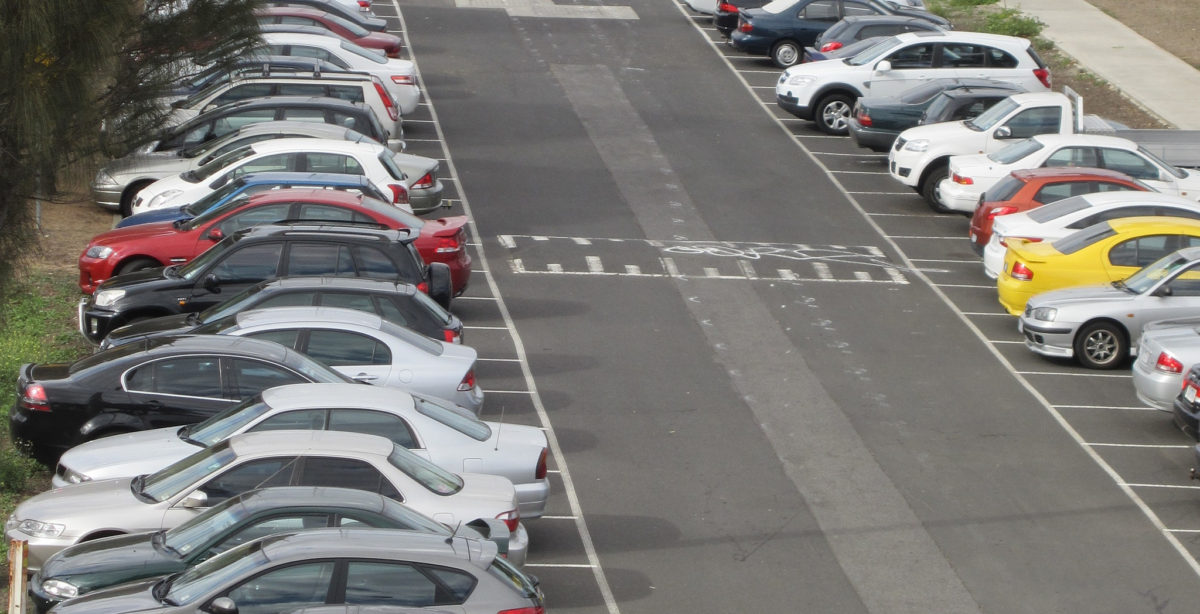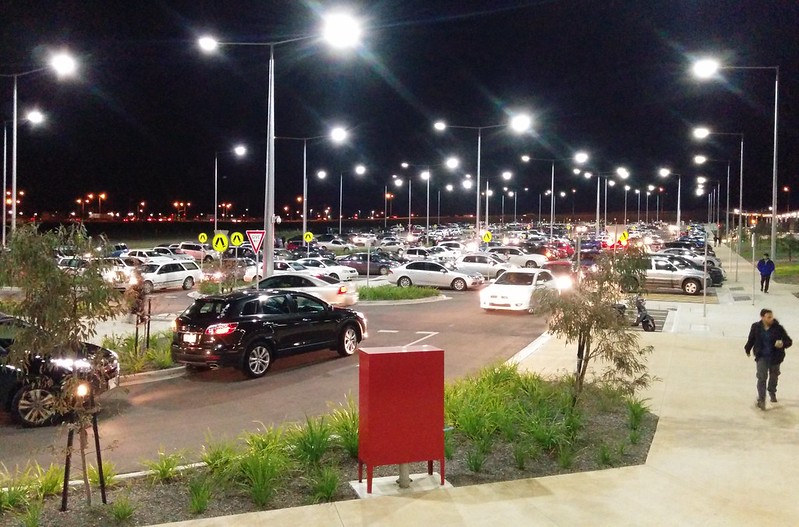The Federal Auditor General released its report into the Commuter Car Parking Fund, and found it totally flawed, with the selection of sites done on the basis of politics, not merit.
You can read the full ANAO report here, but I wanted to highlight the myriad of problems with the scheme.
1. The politics
The projects were mostly targeted into Coalition seats, seemingly to try and shore up votes, particularly in Victoria (this was in the wake of the 2018 state election), but the report also notes the procedural failures – in getting projects approved for funding without them meeting the approval criteria, and in pushing funding through before the government entered caretaker mode, but claiming they were election commitments.
All this has been the main focus of the Federal Opposition and most of the media. But it’s missing half the story.
2. The locations
Station car parks have their place – particularly on the urban fringe and in regional areas where land is cheap, local demand genuinely can’t support better buses, and many passengers are travelling long distances to get on a train that make walking and cycling difficult.
The big caveat is that any suburb that has chronic traffic congestion every peak hour can support better buses, and walking, and cycling options.
There were widespread concerns about the suitability of the inner-suburban locations chosen for this program. For instance Glenferrie, Balaclava and Camberwell are very dense inner suburbs with existing good station access including by tram, where adding extra commuter traffic doesn’t make sense, and in fact would cause more congestion problems in the shopping strips.
And at Bentleigh and Elsternwick, the proposed car parks aren’t actually at the station – they’re 300-500 metres away! In fact the ANAO report found that no less than 10 of the 33 projects were not attached to stations.
If the car spaces wouldn’t benefit train commuters, this of course underscores that it was never really about improving public transport.
Just realised that Tim Wilson’s electorate office is closer to the entrance to Bentleigh station than the proposed upgraded car park. #auspol pic.twitter.com/ojqJYx1Ph6
— Daniel Bowen (@danielbowen) June 29, 2021
3. The cost
Section 4 of the report talks about typical construction costs per space.
The department used the consultant’s report to brief the Minister on a benchmark cost range and average cost per space (in June 2020 dollars) for three typical scenarios (see Table 4.2). The department advised the Minister that the variability in the cost ranges for car park projects is driven by a range of site specific factors.
Factors include: design considerations, fire regulations and security requirements, construction methodologies, and external site factors (including demolition and site clearances, service and utility diversions, ground contamination and conditions, public realm works, site constraints, road works to access car parking facilities and traffic management).
ANAO report, page 73. Text on factors taken from footnote.
I’ve reproduced the cost table below, with an additional column: the average cost divided by a Melbourne daily fare, so we can calculate how many days of travel it would take for the cost of the parking space to be recouped.
| Scenario | Cost range per space | Average cost per space | Daily $9 fares per average cost |
| At-grade | $11,900 – $40,120 | $26,700 | 2,966 days |
| Multi-storey standard (Brownfield) | $18,400 – $44,500 | $28,800 | 3,200 days |
| Multi-storey adjacent to rail line (Brownfield) | $26,800 – $45,800 | $39,600 | 4,400 days |
Some assumptions:
- each car space gets an additional person onto a train (which is a generous assumption; in many cases it may siphon existing train passengers from walking/cycling/catching a bus to the station)
- they’re paying a peak hour fare of $9 (some car park users get Concession fares or use the Earlybird fare and pay half that, though extra spaces are more likely to be filled at the end of peak)
- 250 days per year of use (eg every weekday, so not taking into account quiet times during the summer holidays)
- the station car park remains free to use – which is the case throughout Victoria (but not in some other places, such as Perth)
Taking all that into account, the new car spaces take between 11 and 17.6 years to recoup their costs.
And that’s assuming that the extra passengers don’t actually contribute to the cost of the train service they’re using – which is clearly ridiculous – and that there are zero costs additional for running and maintenance of the car park.
No wonder the Benefit Cost Ratio of the projects were largely ignored.
The default feeder solution is wrong
The real problem is that the car has become the default Go To rail feeder mode for many politicians – on both sides, and at both State and Federal levels.
This is perhaps in part because cars are so inefficient. Car parks take up so much space for so few people that they’re very visible around railway stations, and people assume they’re the majority access mode. (They’re not.)
Car is inherently self-limiting as a rail access mode. To be able to use it, you have to get to the station early (which plays against flexible hours and some types of shift working), you have to spend thousands every year on owning and running a vehicle, making it very challenging for anybody on a low income.
And you have to be someone who is actually able to drive. Plenty of people can’t drive – in Victoria, more than 20% of people in the 18-28 and 65+ age groups don’t have licences.
Even the biggest station car parks fill up, and they cause local traffic congestion at peak times.
Walking and cycling need more attention as rail feeders. And the State Government’s new Bus Plan is encouraging – though it’s more of an overarching strategy at this stage than a firm detailed plan for upgrades.
If car parks are the best option in some locations, and it’s possible they might be, what the ANAO report is saying is that they need to be chosen genuinely on merit, not because of politics.
But more broadly, politicians need to remember that the actual goal is getting people onto public transport, not getting cars into car parks.
Note: I can’t claim credit for the phrase “Pork and Ride” – it’s been in use since at least Feb 2020.



13 replies on “The multi-storey failure of Pork and Ride”
One of the biggest problems with suburban stations is that carparks are often placed “front and centre” at station locations, further encouraging their use. Improved bus interchange facilities and bus bays right out the front of stations (not the side street 100m away) would provide visual cues to passengers that buses service the station and help improve usage
When an issue is quite literally wrong on so many levels 😂
Many thanks for the article. The ANAO and this post has stated the obvious. And it needs to be stated again and again.
Great work at clarifying things for me Daniel. I did already know there was some absurdity with the proposed car parks. Like where?
Well, he did get elected on a very narrow margin. So apparently the spending of taxpayer money did accomplish what it was set out to accomplish.
@Anonymous, yes that’s certainly a problem at some locations. Two that spring to mind are Craigieburn and Laverton, where parts of the car park are closer to the station entrance than the buses.
It seems to be less of a problem where the railway line intersects the major local road (rather than running parallel to it). Bentleigh and Ormond and a lot of the other recently rebuilt stations are quite good in this regard.
@Michael 😂
No-one seems to be commenting on the most outrageous thing of all: the Federal government should have nothing to do with any such project. There’s a reason this sort of thing is supposed to be a State responsibility. Someone sitting in Canberra cannot understand details of town planning in Melbourne, and, Canberra being what is, probably doesn’t even understand the urban planning arguments you are making.
Just because money is spent doesn’t mean there will be any improvement. Most of us have seen an examples of disastrous renovations which actually decreases the vaue of a house. This scheme is the Changing Rooms of transit.
See also the Feds developing their land on the edges of Essendon and Moorabbin Airports, because they can. Kingston Council vehemently opposed the retailing at Moorabbin Airport, but had no power to stop it. There’s a DFO on the north side, a Costco on the east, and an office park on the south, none of it anywhere near the numerous public transport hubs in Kingston.
one doesn’t even know where to begin with this:
– eggregious waste of money
– pork barrelling of the purest variety
– does not serve a meaningful useful purpose
– feds sticking nose in where not theirs to
all points raised above.
How many bus / tram / cycling route service improvements could have been funded with $400m?
I agree this project was purely political to gain votes. The money would be far more efficiently spent on bus, cycling and walking path upgrades feeding far more people to train stations and also with the added benefit of encouraging increased public transport usage. Car parking also is aesthetically not pleasing and dominates the frontage of many stations, I would rather see more public open space, community and commercial issues at the front of stations.
Plus many buses in outer suburbs finishes at 9pm, making it almost impossible for people without cars to get home if they live far away from train stations if they arrive after 9pm. In addition, people may need to start traveling on the train before 6am, and in the outer suburbs, no buses at that time either. How about more funding for buses to meet every train from first train (4am) to last train (1am) rather than more car park spots that are more expensive than buses.
@ indigohex3: Assuming the buses even make it to 9PM and actually run 7 days a week. Cough, Mooroolbark, cough.
Lol at more carparking at Balaclava Station with a reasonably dense population, 3 tram routes in pretty well four directions and a couple of bus routes not far away. While such pork barrelling should see the end of a government, I doubt it.
Apart from the obvious misuse of public funds, I think you’ve touched on something else: cars are seen as the default option full-stop. Walking, cycling, buses and trains are all treated as alternatives.
In most urban (and inner-suburban) situations, private cars are not an appropriate form of transport, and yet we still work on the principle that people should be able to drive wherever they want, whenever they want. And then give everyone that wins the parking spot lottery tens of thousands of dollars of value?
We should be removing car parking at most stations, not creating more of it. And then thinking about what efficient ways people can use to get to the station; more pedestrian and cycling facilities and safer, slower, emptier streets as well as public transport. Melbourne hasn’t even tried designing an integrated transport network.